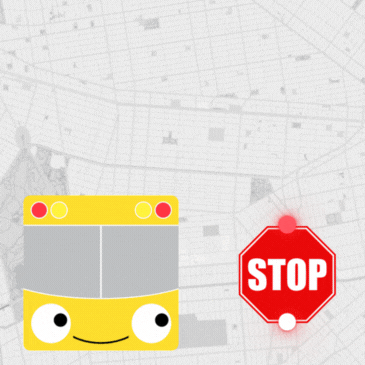
Weekly Dvar Torah: “Come as You Are” — Stories That Speak the Rebbe’s Soul
Over the past week, during the Gimmel Tammuz farbrengens, I heard several stories about the Rebbe—stories I’ve probably heard before, and perhaps you have too. But this time, they gripped me in a deeper way. Each tale, simple as it may seem, encapsulates the Rebbe’s essence: his boundless love, his deep faith in every Jew, and the profoundly personal way he reached into our lives and lifted us.
Story One as told by Rabbi Zalmen Vishedsky, Chabad Shliach to Basel Switzerland:
Nachum came to America from Soviet Russia in the 1970s with his mother, a brave Lubavitcher woman from the underground network of Chassidim who had kept Yiddishkeit alive behind the Iron Curtain. They arrived with little and struggled to make ends meet. Nachum took on odd jobs, doing whatever it took to support his mother. He didn’t ask questions—he just did what needed to be done.
He wasn’t a scholar or philosopher, but he was a Chossid through and through. “I wasn’t so focused on the content of the Rebbe’s Maamarim or Sichos,” he once said, “but I was always there. I was always around Seven Seventy.” He showed up. He passed by the Rebbe whenever he could—during Sunday dollars, at weekday Mincha, farbrengens—whenever the opportunity arose.
Eventually, Nachum became a contractor. Long days on construction sites meant he was always covered in paint, plaster, and dust. “You don’t come to the Rebbe looking like that,” he said. And so, slowly, he stopped coming to 770.
Then one day, a friend of his got married. Nachum put on proper clothes for the chasunah and thought, “I’m already dressed nicely, maybe I’ll go by the Rebbe for dollars.” He joined the long line of thousands.
When his turn came, the Rebbe handed him a dollar—but didn’t let go. The Rebbe looked him in the eye and asked in Yiddish: “Vu bistu?” — “Where have you been?”
“I looked up and quietly answered, ‘Ich bin do’—I’m here.”
Still holding the dollar, still holding Nachum’s gaze, the Rebbe asked a second question:
“Farvos kumst du nisht?” — “Why don’t you come?”
Nachum was stunned. “Ich bin aleh mol shmutzik,” he admitted. “I’m always dirty.” He meant it literally—he didn’t feel right coming in his dusty work clothes.
The Rebbe still hadn’t let go of the dollar, and with gentle insistence and love, the Rebbe said:
“Kum vi du bist, ober kum.” “Come as you are—but come.”
When I heard this story, like many others I wept. I was overcome by such a yearning to hear the Rebbe say those words to me too: “Kum vi du bist.”
And maybe—no, surely—he has.
Because the more I think about it, the more I believe that the Rebbe says those words to every one of us. He’s still standing there, dollar in hand, not letting go. He’s looking into our eyes and saying: “Yes, I want you to grow. Yes, I expect you to stretch beyond your comfort zone. But before anything else, I just want you to come. However you are, wherever you are—just come.”
Story Two:
It was Sunday, the 26th of Adar I, 5752 (March 1, 1992)—the last Sunday the Rebbe gave out dollars before his stroke. Thousands of people passed by to receive a blessing and a dollar to give to tzedakah.
Among them was a father holding his young daughter in his arms. After receiving a dollar and a blessing, the little girl looked directly at the Rebbe and, with pure innocence and joy, said loudly: “Lubavitcher Rebbe, I love you!”
Everyone nearby was startled. It was unexpected—so unfiltered, so bold for a child to say such a thing aloud.
The Rebbe’s face lit up. With a beaming smile, he took another dollar and handed it to the girl. “This is for the love,” he said.
Story Three:
That same Sunday, a man from England approached the Rebbe. “A few years ago,” he said, “you gave us a Bracha for children. I came to thank you. Your blessing bore fruit—we now have a child.”
The Rebbe’s face shone with joy. “Thank you very much for sharing the good news,” he said warmly. “Not too many people come back to share the good. I appreciate it deeply. You should always have good news to share.”
Each of these stories is precious. But together, they form something more—a living portrait of the Rebbe’s soul.
Unconditional love was his foundation. Whether it was a dusty contractor who thought he wasn’t presentable, a small girl calling out “I love you,” or a man bringing happy news—the Rebbe saw only the soul. No grime, no distance, no formality could hide the spark. He responded to love with love. He called to us, not based on where we’ve been, but where we could go—starting exactly where we are.
And he didn’t just love in theory—he longed for our presence. “Why don’t you come?” wasn’t a rebuke. It was a cry of love. I miss you. You matter.
Most of all, the Rebbe wanted to hear good news. Too often, he pointed out, people only remembered to write or come when they had trouble, when they were in need. He even coined a phrase for such people—Tzores Chassidim, “trouble-time Chassidim.” But the Rebbe begged: Don’t wait until things go wrong. Come when things go right. Tell me the good news too.
He believed this practice was transformative—not only emotionally but spiritually. If we make it a habit to share only good, we invite G-d to give us more good to share. The Rebbe promised: When you report simchas, you’ll live with simchas.
Let’s listen. Let’s write to the Rebbe. Let’s make it a habit to share our good news—about our children, our health, our mitzvahs, our simchas. Let’s reconnect—not just in sorrow, but in celebration. Let’s bring the Rebbe joy, as he always sought to bring joy to us.
And if you ever feel you’re too far, too unworthy, too “shmutzik,” remember the Rebbe’s gentle insistence:
“Come as you are—but come.”
Let’s come. Let’s share good news. Let’s live with joy. And let’s bring the Rebbe true nachas from us all.
Have a Shabbos filled with only good news,
Gut Shabbos
Rabbi Yosef Katzman















